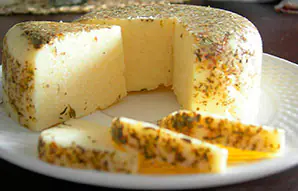As you know, cheese is a high-protein, easily digestible dairy product. It is the high percentage of protein content and low amount of fat in this product that attracts bodybuilders and fitness models to supplement their diet. Did you know that this product is already more than 2000 years old, and maybe even more - after all, the history of its appearance is deeply rooted in pagan times, even before the birth of Christianity. In this article we will reveal the oldest recipe for hard cheese from our old ancestors, and find out how they produced this product in those distant times...
Ancient cooking recipes.
The history of hard cheese, like milk, begins from the time when man was able to tame the aurochs, the progenitor of modern livestock. After animals were domesticated by man, the ability to consume and store milk and dairy products made from it came to him. It was discovered that when milk sours, it is not necessary to throw it away. It must be squeezed out, after which a thicker mass will remain. It needs to be dried. This dense mass was stored longer than milk. Such ancient recipes for making cheese exist even today, for example, in the East and in some undeveloped areas of Africa. Before eating this cheese, you need to soak it in water. This method of making cheese also existed in the territory of modern Siberia. Ancient ancestors hung the resulting curdled mass over a fire and smoked it. The result was a nutritious, relatively solid product, which was sometimes consumed instead of bread.
Along with these recipes, those based on adding enzymes to milk were also known in ancient times.
Unfortunately, history does not record when a person first used a plant or animal enzyme when making cheese. However, this can be called a happy accident, which made a person notice that the mucus from the stomach of a killed lamb or the juice of a fig tree, thistle inflorescences or saffron seeds, and not only they, perfectly curdle milk. In general, regardless of how it happened and when, the use of various enzymes gave birth to a new stage in cheese making, which continues to this day.
Post Views: 162


